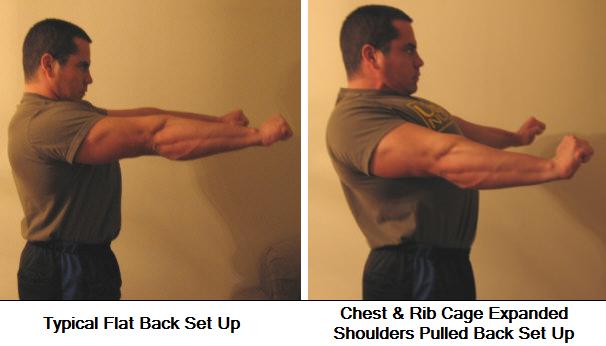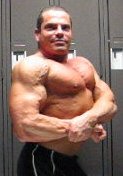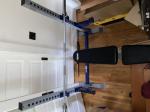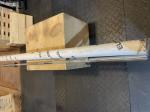How To Increase Your Bench Press With Proper Technique
By Lee Hayward
Author Of The Blast Your Bench Program
The Barbell Bench Press is one of the most popular gym exercises. It is also one of the most misused exercises. Part of the problem is that the bench press is an ego exercise. A lot of guys judge their training progress based on how much they can bench. So often times they end up training too heavy and using poor technique in effort to lift more weight.
The average gym member will usually try to increase their bench press by doing more reps, sets, or weight on the bench press. When in reality they will gain more strength and make better progress over the long term if they focused their effort on improving their bench press lifting technique rather than simply lifting more.
The best way to make big strength gains in your bench press in the shortest period of time is to improve your form. The techniques listed below are used by the best bench pressers in the world. But keep in mind that changing your bench press technique can take a bit of getting used to and initially your poundages may go down before you get the hang of the new technique.
This is just like when you first learned how to use a computer and started off as a two-finger typist. You can type with two fingers, but not very fast. Then when someone eventually taught you the proper way to type, using all fingers, you probably found it very frustrating at first. Most likely you couldn't even type as fast as you could with just two fingers. But with a bit of practice you eventually got to the point where you can click away on the keyboard faster using the proper typing technique compared to the old two finger method. The same will hold true for your bench press, once you get used to the proper lifting technique your strength gains will progress much faster.
Proper Bench Press Technique
Many people do not realize how much strength they lose by making the bar travel further than necessary. The less distance you have to move the weight the stronger you will be. To shorten the distance that you press the bar you need to expand your rib cage and stick your chest out, while at the same time squeezing your shoulder blades back together behind you.
You can even try this now while sitting there reading this. Right now sit up tall in your chair and take a deep breath, expand your rib cage, and stick your chest out as far as you can. At the same time squeeze your shoulder blades back as far as you can. Now do it again, but this time hold your arms out in front of you as if you were doing a bench press. You can even alternate holding your arms out in front with your upper body relaxed and then holding your arms out in front with your chest out and shoulders back.
There will be at least a few inches of distance in the difference. By expanding your chest you can shave an inch or two off your bench press stroke. And by pulling you shoulder blades back together you'll reduce the distance by another inch or two. Look at the picture below and you'll see the difference. See how far the elbows are in front of the torso in the first pic compared to the second pic. Yet, the arms are straight and locked out in both pictures.

In addition to proper upper body positioning, you also need to drive through your legs to be a good bench presser. When you set up on the bench your feet should be firmly planted on the floor and you should push with your legs as if you were trying to slide your back up the bench, without actually letting your back slide up the bench. A lot of powerlifters will put lifting chalk along their upper back to help create more friction on the bench and allow them to drive with their legs without sliding up the bench. This will help stabilize and support the entire body and also help you hold the "chest out and shoulders back" position even better.
When you position yourself on the bench press, set up so that your eyes are in direct line with the bar. This is the ideal place to take the bar out of the rack and maintain your proper body position as outlined above. To handle maximum weights you need to keep your entire body tight. Once you are set up on the bench, grasp the barbell and squeeze it hard and try to pull outwards while keeping that tight grip on the bar. This will instantly tense and activate the muscles in the upper back and create a more solid base.
Once you un-rack the bar hold it at arm's length for a couple seconds and let the weights settle. Focus on keeping your proper set up by sticking your chest out, pulling your shoulders back, and driving with your feet. Then take a deep breath and hold your air. By holding your air you'll stabilize your torso and keep more tension in your body. (Note: you can breathe in and out normally in between reps, but during the actual lift itself hold your air in).
Lower the bar somewhere between your nipples and where your chest and upper abdominals meet. The actual spot where you touch the bar may vary from person to person, and depends on your individual body structure.
As you lower the bar keep your elbows tucked in so that your upper arms are at a 45 degree angle with the sides of your torso. By keeping your elbows tucked in like this, and not letting them flare straight out to the sides you'll keep more strength in the bottom of the lift and place less stress on your shoulder joints.
When you lift the bar back up the chest muscles will start the initial drive off the body, but once you get half way up the triceps will take over and finish the lift. To help activate the triceps more and lockout the lift, visualize straightening your arms out underneath the bar. Rather than trying to keep pressing the bar up. Another way to think of it is to visualize shoving yourself away from the bar, rather than pressing the bar.
To show you what I mean, stand up against a wall and assume a push up position. Lean in and push hard against the wall, almost like you are trying to push a stuck car. In this position you are pushing hard, but your elbows are still bent. Try it again, but this time stand up against the wall, and instead of pushing hard against the wall, just focus on straightening your arms out and shove yourself away from the wall.
This is what you should do when you get to the half way point of the rep, rather than just pushing against the bar, focus on straightening out your arms underneath the bar and shoving yourself away. This change in focus can really help you finish off the lift when you hit the sticky point half way up.
Implementing these technique tips into your bench press workouts will take a bit of practice, but once you get good at them the results are amazing. You'll feel solid and strong during your lifts and most importantly you'll be able to lift more weight, with better form, and less risk injury as you will not be placing excess stress on the shoulder joints.
To get more workout tips for improving your bench press while building lean muscle mass; check out the Blast Your Bench website and sign up for the FREE 5-Part Bench Press Training Tips e-Course.
About the Author:

Lee Hayward is a competitive bodybuilder, powerlifter, and muscle building coach who is committed to helping aspiring bodybuilders and fitness enthusiasts gain muscle, burn body fat, and develop a strong muscular body.
Lee is also the author of the Blast Your Bench program, which teaches you how to increase your max bench press by as much as 50 pounds in as little as 3 weeks, regardless of your previous weight training experience. To learn more about how you can quickly increase your strength and gain lean muscular bodyweight, just visit Lee's website at: http://www.BlastYourBench.com
Webmaster's Note
How much can you bench? If you're into bodybuilding, I'll bet a month's pay someone has asked you this question. Just by using the bench pressing technique in the article above, along with the workouts in the BlastYourBench ebook, I have added thirty pounds to my bench press in less than a month!
You do the bench press everyday for three weeks with weekends off. Yes, normally this would be overtraining but since it only lasts for 3 weeks it isn't. It just shocks your muscles into growing very quickly. Since you don't want to overtrain, you can follow up BlastYourBench with the BlastYourSquat routine which is included.
Take a look at the BlastYourBench table of contents here (link opens with PDF reader).
Recent Articles
-
Bench Press Full Set
Jul 06, 22 01:48 PM
Weights/Bar/bench/clamps/safety bars,etc! Everything is included and is In VERY good condition! About 300lbs of weight along with a adjustable/removable -
Eleiko Olympic training bar
Sep 20, 21 02:39 PM
Bar has been used less than one year. It is in superb shape. Same bar new is almost $1,000 dollars. Selling for 800.00.I Have the tube to ship it. Razor4wolverines@yahoo.co -
Olympic weights
Jul 07, 21 05:35 PM
I have 395 pounds of weight Including the barbell. 4)45 2)35 2)25 2)10 4)5 4)2.5 contact: Guadron193@gmail.com








